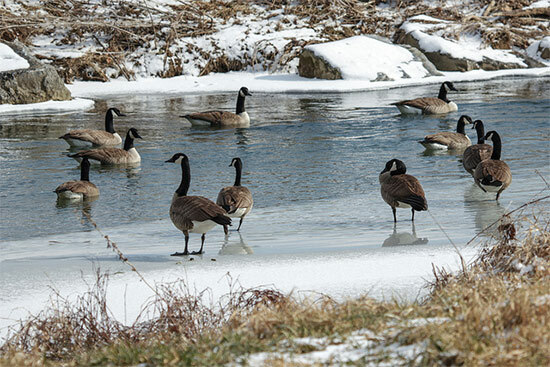Severe weather pushes more waterfowl into region
More than 905,000 ducks, geese and swans were counted in Maryland’s Midwinter Waterfowl Survey.
Severe weather to the north of the region pushed a large number of ducks, geese and swans into the main portion of the Chesapeake Bay this winter, leading to a 22 percent jump in the results of Maryland’s 2014 Midwinter Waterfowl Survey.

According to the Maryland Department of Natural Resources (DNR), pilots and biologists from both DNR and the U.S. Fish and Wildlife Service (USFWS) counted more than 905,000 waterfowl during their aerial assessments of state waters this winter. The birds were easier to count this season than in winters past because a number of them were concentrated in the few ice-free, open waters of the Bay and its tributaries.
This total included 128,000 dabbling ducks and 190,300 diving ducks, representing a 76 and 94 percent jump from last winter, respectively. Indeed, the canvasback count was the highest it has been since the mid-1960s, and estimates for mallards and black ducks were the highest they have been since the mid-1970s. Survey teams also witnessed large numbers of Canada geese along the upper Bay: 512,000, 11 percent more than were witnessed in January 2013.
The USFWS Division of Migratory Bird Management pools these survey results with those from other states to get a sense of the distribution and population size of waterfowl wintering along the Atlantic Flyway. This migration route follows the Atlantic coast of North America, and this winter hosted more than 3.19 million birds. Of this total, teams counted more than 1.6 million in watershed states, including Maryland, Virginia, West Virginia, Pennsylvania, Delaware and New York.

Comments
There are no comments.
Thank you!
Your comment has been received. Before it can be published, the comment will be reviewed by our team to ensure it adheres with our rules of engagement.
Back to recent stories